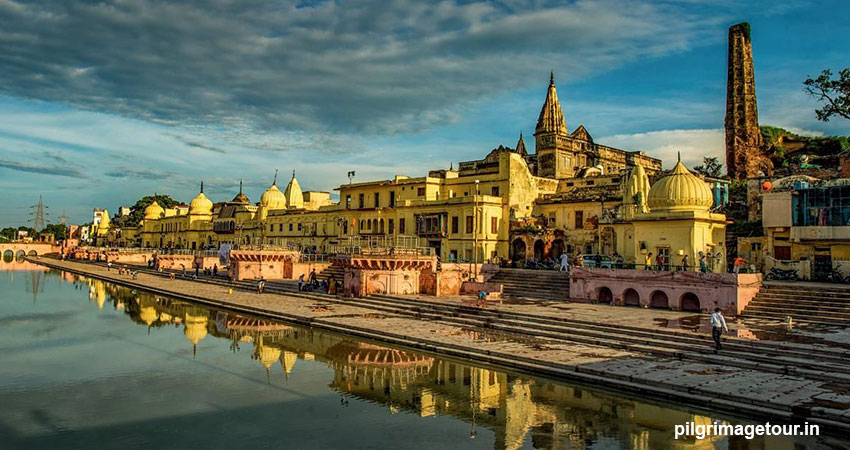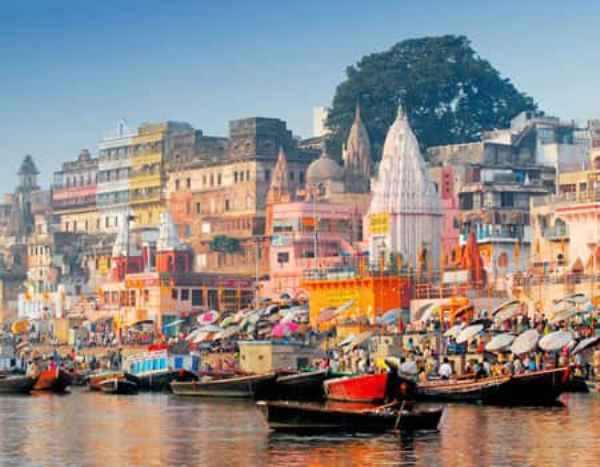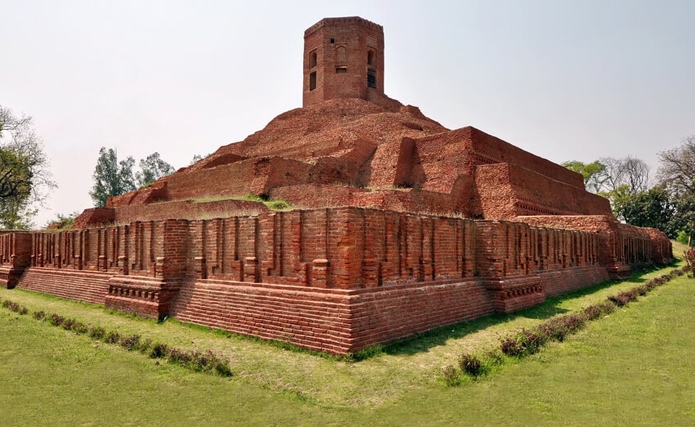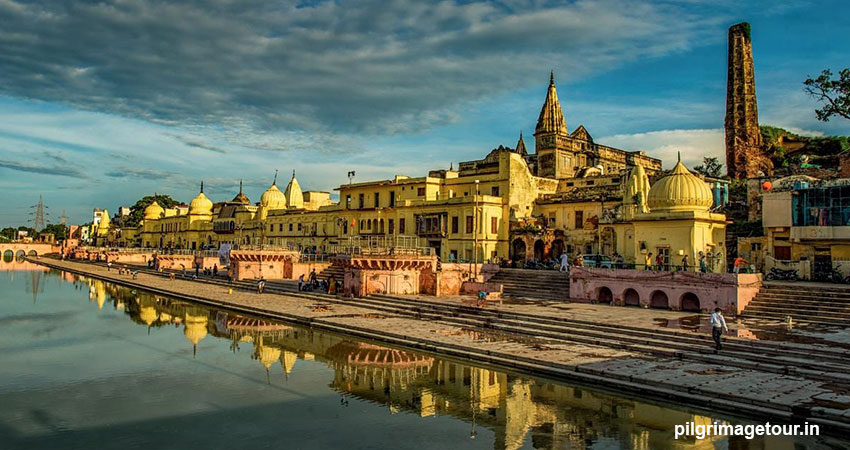India is a magical country. It offers a lot of interesting locations to see and may be described as a traveler's paradise. One of the most fascinating aspects of this nation is that you may travel from town to town and encounter individuals of all cultural beliefs. In India, there are many different ceremonies, and one of the most powerful and passionate is the Ganga Aarti.
Every evening, three sacred cities in India perform Ganga Aarti. Haridwar, Rishikesh, and Varanasi are the three cities. They all have distinct personalities and energy. It is claimed that you should participate in all three aartis at least once in your life.
Overview of the Ganga Aarti
The aarti is always performed in front of the Ganga. During the aarti, several lamps are ignited. Priests frequently draw a circle around them. It is usually done in a clockwise direction. Different songs glorifying the Ganga are always sung along with the aarti. The deity's power is said to be transferred to the lights.
Devotees are instructed to cup their hands over the flames and touch their foreheads after the aarti. This is done so that the Goddess Ganga can provide pleasure and cleansing.
This event is led by a group of youthful saints clad in silky saffron and white robes. Each pandit or saint picks a designated position on the Ghat and begins the ceremony by presenting flowers to the river. Many oil lamps, such as the snake hood light, are waved in unison during the rite.
During the ritual, conch shells are also blasted. During the ritual, yak tail fans and peacock feather fans are also waved. The priests finish the procedure by pouring water into the river from a bowl. The worshippers then let go of little oil lights with flowers on a leaf, allowing them to float down the river.
"Thousands of devotees flock to see this Aarti, and at the conclusion of the Ganga aarti ritual, thousands of little oil lights float in the river, like countless stars on the surface".
What is the best way to attend the Varanasi Ganga Aarti?
For begin, you'll need to be in Varanasi. People, on the other hand, arrive quite early in order to secure a good viewing position for the aarti. Thousands of people visit the site every day. The aarti is routinely attended by locals as well.
As a result, getting to the ghats by 5 p.m. is a smart idea. You'll be able to get a front-row seat. You may not be able to see anything from the rear due to the large crowd.
Being on a boat is an excellent way to watch the entire event. A boat ride, however, must be reserved in advance. Aside from that, several stores and home owners rent out their balconies to tourists who want to see the aarti. You may also inquire with the locals about this. You may observe the entire aarti in peace this way.
In addition, there will be less people on the balconies than on the ghats. Interacting with the people will give you a flavor of the culture. If you want to see a Maha Aarti, you must travel to Varanasi near Kartik Purnima at the end of each year.
Varanasi also has a sunrise aarti in the early morning. Even that is lovely. Subah-e-Banaras is in charge of organizing the event. If you are a morning person, you may go to that one as well.
In Varanasi, how is Ganga Aarti performed?
Before beginning the Ganga Aarti, there must be several preparations made. The priests who conduct the aarti are required to dress in a dhoti and kurta. The kurta should also feature a gamcha. Gamcha resembles a towel.
Five raised boards are gathered around a tiered brass bulb. In addition, there is a Ganga devi statue with incense sticks, flowers, and a conch shell. Other puja materials are also available.
The aarti can only be performed by educated Pandits. They should be familiar with sacred Hindu texts such as the Upanishads and Vedas. The principal priest, who is also the leader of Gangotri Seva Samiti, leads the priestly teams.
The Aarti is a tray with oil-burning lamps and a modest flame. The Hindu priests known as pundits hold and execute the Ganga Aarti, which has extraordinarily big lights.
They surround the ceremonial site in a clockwise direction, facing the Ganga, and give devotional gratitude in this manner. They wear unique clothing, like as silks and fine textiles, and chant slogas or sing bhajans in the backdrop. This is done as a thank-you gesture to Maa Ganga.
It is thought that by doing so, people will get the divine power of the Ganga's water. The devotees then take the smoke from the burning lamps and place it near their heads as a sign of reverence and to receive blessings and purification from the Goddess.
The aarti is a well planned event. It all starts with the multi-tiered brass bulbs being turned on.
When the illumination turns on, a well-synchronized chanting of mantras begins. The conch shells are also blown by some of the monks. It's a signal that the aarti is about to start. The shells are also said to purify the air. The remaining priests ignite the incense sticks and present them in a clockwise circle to the goddess.
There are some preparatory mantras in the aarti. Camphor is put to the brass lights after they have been recited. After then, they execute the aarti. This aarti will give you goosebumps for sure. You will sense the energy that is circulating about you. Peace and tranquility will be showered onto you. It's undeniably a spiritual experience. The mantras have certain vibrations that you will be able to detect.
You will notice a sense of cleanliness in the air when the camphor aarti is completed. It's a unique sensation that can't be articulated or written about. The Ganga Aarti in Varanasi is the only place where you can feel it.
What to Look during Varanasi's Ganga Aarti Ceremony?
The Ganga Aarti Ceremony, done every evening at Varanasi's Dasashwamedh Ghat, is one of the world's most beautiful religious or spiritual ceremonies. It is organized, with priests standing in a clockwise circle in front of the Ganges to offer the Aarti. The religious ritual takes place near Kashi Vishwanath Temple, one of India's most prominent pilgrimage shrines.
The entire aarti is a sight to behold. Seeing a bunch of pandits in lovely saffron robes. It's worth looking at the colors in a frame. Water, a god, saffron robes, golden brass lights, and people are all present. A large number of incense sticks have been burnt, and the evening's canvas appears to be brighter.
Keep an eye on the oil lamps' synchronized activity. There's a big fire going, and those lamps are rather hefty. The pandits, on the other hand, have been educated to hold them. The movement's regularity will leave you perplexed and stunned at the same time.
During the aarti, peacock feathers and yak tail fans are also waved in a synchronized way. People lighted little candles and left them in the river with flowers as offerings to Ganga when the event ended. You might want to stick around until the finish to see what happens. With the streetlights light up, the river looks stunning.
It is a big event as gurus of all ages give an Aarti to Maa Ganga with large golden looking brass lights covered in silk type material robes in saffron and various colours. These lamps are also claimed to weigh roughly 2 kg. They light little flames and place them in front of the river.
The 'blow of the conch shell,' which awakens your senses, and the scent of burning incense sticks are among the other ceremonies. They're also put out and waved in enormous patterns, with the massive blazing bulbs moving in circles.
As the chantings take place and bells ring in the background, it is also done in a rhythmic manner. It is one of the most beautiful visual attractions, with a magnificent exhibition of absolute devotion to Maa Ganga.
When is the Ganga Aarti held in Varanasi?
Every day of the year, the Ganga aarti takes place. If you want to see the major celebrations, though, you should go during Kartik Purnima. It begins in October and concludes in November. Every day at sunset, it takes place.
In Varanasi, where does Ganga Aarti take place?
At the sacred Dasaswamedh Ghat, the aarti is performed. It's close to Varanasi's famed Kashi Vishwanath Temple. You'll have no trouble finding your way to the ghat because everyone knows where the aarti is held.
When does the Ganga Aarti take place in Varanasi?
Rain or shine, the ritual takes place every evening at sunset: in the summer at 7 p.m. and concludes at 07:45 p.m., and in the winter at 6 p.m. and concludes at 06:45 p.m.
The Ganga Aarti begins at the precise hour of sunset. The ceremony's commencement timing varies according to the moment of sunset. You should get to the ghats by 5 p.m. if you want to see the event from a good vantage point.
What is the cost / entry fee for Varanasi's Ganga Aarti?
There is no charge to attend the ceremony. If requested, people are invited to make any donation. You'll need to hire a boat if you want to view the event from the river. During this celebration, a boat ride will be expensive.
Varanasi's Ganga aarti is breathtaking. It is not the same as the one performed at Haridwar and Rishikesh. Varanasi's aarti is elaborately planned and performed with great pomp and show. If you're in Varanasi, you must attend the aarti.












 +91-7303039611
+91-7303039611